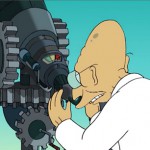I know it’s Ottawa and it’s March and I shouldn’t be whining about the weather, but really, the sight that greeted me from my window this morning was a bit of a shock on March 30.

Enough already!
I know it’s Ottawa and it’s March and I shouldn’t be whining about the weather, but really, the sight that greeted me from my window this morning was a bit of a shock on March 30.

Enough already!
 People or, for that matter, nation states are known by the company they keep.
People or, for that matter, nation states are known by the company they keep.
Here is the list of nations that supported Russia in the recent UN General Assembly vote on the matter of Russia’s occupation of the Crimean peninsula:
All leading champions of human rights, freedom and democratic values, I see.
It was less than 24 hours ago that I wrote about the death of a friend and now I have to do it again: I just learned that Palmer Hanson died a few days ago, after a prolonged illness.
Palmer’s name was well known to the calculator enthusiast community ever since the days of the friendly rivalry between owners of high-end Texas Instruments and Hewlett-Packard calculators in the late 1970s. Palmer was famous, among other things, for writing one of the fastest calendar printing programs for the TI-59 calculator. Though I never met Palmer in person, over the past decade and a half I corresponded with him many times, on account of my Web site dedicated to programmable calculators, rskey.org, and the archival material that I publish there.
It was only a few weeks ago that I received an unexpected parcel from Palmer, with a batch of rare newsletters that he sent to me for scanning and Web publication. I gladly complied. Another batch of newsletters followed shortly thereafter; this batch is still sitting on my desk, as I’ve been busy with work lately and have not had the time to do the scanning.
Therefore, I knew that Palmer was gravely ill, but I was nonetheless hoping that he would stay with us for a little while longer. Unfortunately, when our time comes there is not much we can do, and Palmer’s time came after a long and, I sincerely hope, happy life.
Googling his name just now, I came across a video of a presentation he gave less than two years ago, at HHC2012:
Good-bye, Palmer. I feel privileged to have known you, even if it was just online.
25 or so years ago, a mutual friend introduced me to Karoly (Charles) Grandpierre, a struggling Ottawa artist of Hungarian extraction. “Pierre”, as his friends knew him, finished his studies at the Ottawa School of Arts and was trying to make a living as a painter. The friend who introduced us died the following year in a tragic car accident. Although we didn’t really stay in touch, I never completely lost track of Pierre, as there were other mutual friends who from time to time told us about him. That’s how we learned, for instance, that eventually he moved back to Hungary.
Well, Pierre is no more. I just read that he passed away last week, at age 65, after a prolonged battle with cancer.
Some details have been released (leaked?) by Inmarsat and the AAIB about their analysis of the flight path of the missing Malaysian airliner. Some details remain frustratingly absent.
Relying on the measured frequency of the signal received from the missing jet, they plotted possible courses of the aircraft and they concluded that only the route that took MH370 to the southern Indian Ocean is consistent with the data. Here are the two critical slides from the annex of their released material:
They are clearly quite confident about the validity of their analysis, and they may be right. Still, there are a few potential issues with which I am not comfortable.
The analysis obviously relies on two key assumptions: first, that the aircraft traveled at a constant speed and second, that its transmitter had good frequency stability. I am not familiar with Inmarsat equipment used on board aircraft, but I do know that a frequency drift of a couple of hundred Hz, over a period of time of several hours and under changing environmental conditions, is not at all unusual [Update (2014/03/28): I now know (thanks, Craig!) that Inmarsat equipment uses an oven-controlled oscillator, with a frequency stability of a few 10 Hz or better over the course of a year, so this is a non-issue] for an oscillator that is running at around 1.6 GHz (which, I believe, is the frequency range used by Inmarsat.)
The analysis also relies on the estimated range at the time of final transmission, which is what was used to generate the infamous “arcs” along which the airplane is expected to be found. Presumably, similar estimated ranges are available for all the intermediate data points. However, this range information was not published in the currently released document. [Update (2014/03/28): Intermediate range arcs were, however, published by the Washington Post on March 21 (thanks again, Craig!).]
It is also unclear to me why the northern route can be excluded, as the top slide shows. If the satellite was stationary with respect to the ground, the northern and southern routes would have identical Doppler signatures. Presumably the difference is due to the fact that the satellite, though geostationary, still moves with respect to the Earth’s surface, e.g., because its orbit is inclined. [Update (2014/03/28): The orbital inclination of the satellite in question is 1.6° (once again, thanks, Craig!)] But this is not explained.
Finally, I am also concerned about the large deviations in the early stages of flight between the predicted and observed values and what it says about the validity of the analysis.
Just to be clear, I do not subscribe to conspiracy theories. I do believe that it may have been premature to exclude the possibility that the aircraft made an emergency landing and remained intact in a remote area not far from the location of its last transponder signal, but I may very well be wrong about this. However, I do think that a little more transparency would be useful.
These are the dreaded words no pilot wants to see engraved on his or her tombstone: “Controlled flight into terrain”.
Yet this is precisely what happened when a 737 was flying into Resolute Bay, Nunavut in August 2011, only to miss the runway on approach and collide with terrain instead, killing 12 of the 15 souls on board.
The reasons are aptly summarized in this brief video from the Transportation Safety Board of Canada.
The sad story of this flight reminds me of something I first learned when I was 17 or so, working on my first ever paying software development contract, for Hungary’s equivalent of TSB Canada. I was taught that it is rare, almost unheard of, for an air accident to have a single cause. Most of the time, accidents happen as a result of a chain of mistakes, and if only one link in the chain is missing, the accident would not occur. In this case, the links of the chain included an inadvertent autopilot setting; a compass alignment issue; bad visibility; and breakdown in communications between the two pilots on board. At any time before the final few seconds, the situation was still salvageable, if only the pilots became aware of what was happening. But by the time the ground proximity warning alarm sounded, it was too late.
For the past week or so, CNN has been blabbering about the presumed fact that the pilots of the vanished flight, MH370, programmed a new route into the flight computer at some time between 1:07 and 1:19 AM.
This was, even according to one of their own experts, blatant nonsense. Wherever this information came from, it did not jive with the known facts. Namely that the ACARS system in board would not transmit a yet-to-be-executed flight plan to the ground even if they subscribed to the transmission of navigational data (which they didn’t.) And that the ACARS system on board was not scheduled to make another transmission until 1:37 AM, at which time it was no longer functional.
It became kind of obvious from sporadic comments that this “fact” was nothing but speculation, based on the presumed smooth turn the aircraft executed shortly after the last voice transmission; someone must have concluded that such a smooth turn was done by the flight computer, and thus it had to be entered into the flight computer, presumably after the last (1:07 AM) ACARS transmission.
None of this made any sense to me, and today, CNN confirmed my suspicions: Malaysian authorities assert that no air-to-ground transmission indicated a route change.
In response to this, CNN quickly presented the straight facts. Or they tried, anyway:
But… exactly where did they get the idea from that the last transmission showed normal routing all the way to Beijing? According to their own words, what Malaysian authorities said was that the last transmission did not show a preprogrammed turn. From this, you cannot conclude anything as to what it did show, especially given the fact, reported earlier, that the airline’s ACARS subscription did not cover navigational data in the first place.
Exactly what would it take for CNN to present the facts correctly, just once, without adding their own bits of creative fiction?
Update (2014/03/23): It appears that CNN is blameless at this point. The piece of creative fiction (if that’s what it is) apparently comes directly from Malaysia’s transportation ministry. That does not make it more believable, though, in my opinion.
I looked out my window this morning, and this is what I saw:
I keep thinking that this is how Ice Ages start: spring arrives later and later, winter arrives sooner and sooner, until one year, there is no summer… the snow never completely melts. The next year, more snow arrives and soon (in a few decades) there is a glacial layer of compacted ice that will eventually thicken to a depth of a kilometer or more. And then, it’s here to stay for the next hundred thousand years or so.
No, I don’t expect an Ice Age to arrive on our doorstep just yet, but maybe this view explains why Canadians appear less concerned than they should be about global warming.
So the big announcement was made yesterday: r = 0.2. The inflationary Big Bang scenario is seemingly confirmed.
If confirmed, this discovery is of enormous significance. (Of course, extraordinary claims require extraordinary evidence.)
So here is the thing. In gravity, just as in electromagnetism, outside of a spherically symmetric body, the field will be indistinguishable from that of a point source. So for instance, if the Earth were a perfect sphere, simply by looking at the orbit of the Moon, you could not possible tell if the Earth was tiny and superdense, or large and less dense… only that its total mass is roughly six quadrillion kilograms.
A consequence of this is that if a spherically symmetric body expands and contracts, its (electrical or gravitational) field does not change. In other words, there is no such thing as monopole radiation.
In the case of electromagnetism, we can separate positive and negative charges. Crudely speaking, this is what a transmitting antenna does… and as a result, it produces dipole radiation. However, there is no such thing as negative mass: hence, there is no such thing is dipole gravitational radiation.
The next thing happens when you take a spherically symmetric body and squeeze it in one direction while allowing it to expand in the other. When you do this, the (electric or gravitational) field of the body will change. These changes will propagate in the form of quadrupole radiation. This is the simplest form of gravitational waves that there is. This method of generating radiation is very inefficient… which is one of the reasons why gravitational waves are both hard to produce and hard to detect.
To date, nobody detected gravitational waves directly. However, we did detect changes in the orbital periods of binary pulsars (superdense stars orbiting each other in very tight orbits) that is consistent with the loss of kinetic energy due to gravitational radiation.
Gravitational radiation was also produced when the Universe was very young, very dense, expanding rapidly. One particular theory of the early expansion is the inflationary theory, which suggests that very early, for a short time the Universe underwent extremely rapid expansion. This may explain things such as why the observable Universe is as homogeneous, as “flat” as it appears to be. This extremely rapid expansion would have produced strong gravitational waves.
Our best picture of the early Universe comes from our observations of the cosmic microwave background: leftover light from when the Universe was about 380,000 years old. This light, which we see in the form of microwave radiation, is extremely smooth, extremely uniform. Nonetheless, its tiny bumps already tell us a great deal about the early Universe, most notably how structures that later became planets and stars and galaxies began to form.
This microwave radiation, like all forms of electromagnetic radiation including light, can be polarized. Normally, you would expect the polarization to be random, a picture kind of like this one:

However, the early Universe already had areas that were slightly denser than the rest (these areas were the nuclei around which galaxies later formed.) Near such a region, the polarization is expected to line up preferably in the direction of the excess density, perhaps a little like this picture:

This is called the scalar mode or E-mode.
Gravitational waves can also cause the polarization of microwaves to line up, but somewhat differently, introducing a twist if you wish. This so-called tensor mode or B-mode pattern will look more like this:

We naturally expect to see B-modes as a result of the early expansion. We expect to see an excess of B-modes if the early expansion was governed by inflation.
And this is exactly what the BICEP2 experiment claims to have found. The excess is characterized by the tensor-to-scalar ratio, r = 0.2, and they claim it is a strong, five-sigma result.
Two questions were raised immediately concerning the validity of this result. First, why was this not detected earlier by the Planck satellite? Well, according to the paper and the associated FAQ, Planck only observed B-modes indirectly (inferred from temperature fluctuation measurements) and in any case, the tension between the two results is not that significant:
 The other concern is that they seem to show an excess at higher multipole moments. This may be noise, a statistical fluke, or an indication of an unmodeled systematic that, if present, may degrade or even wipe out the claimed five sigma result:
The other concern is that they seem to show an excess at higher multipole moments. This may be noise, a statistical fluke, or an indication of an unmodeled systematic that, if present, may degrade or even wipe out the claimed five sigma result:

The team obviously believes that their result is robust and will withstand scrutiny. Indeed, they were so happy with the result that they decided to pay a visit to Andrei Linde, one of the founding fathers, if you wish, of inflationary cosmology:
What can I say? I hope there will be no reason for Linde’s genuine joy to turn into disappointment.
As to the result itself… apparent confirmation of a prediction of the inflationary scenario means that physical cosmology has reached the point where it can make testable predictions about the Universe when its age, as measured from the Big Bang, was less than one one hundredth of a quintillionth of a second. That is just mind-bogglingly insane.
Is history thumbing its nose at us? The parallels between the events unfolding between Russia and Ukraine today vs. Germany and Czechoslovakia in the 1930s are unmistakable.
No, I am not going to evoke the hyperbole, comparing Putin to Hitler. (I’ll leave it to Russian propagandists to talk about “fascists” taking over Ukraine.)
But the actual events are another matter.
Consider the parallels between the 1936 Berlin olympics and Sochi.
The parallels between the Third Reich’s prosecution of homosexuals and Russia’s.
The parallels between the Crimea and the Sudetenland.
The parallels between German cries of outrage about the maltreatment of ethnic Germans abroad, and Russia’s.
The parallels between a post WWI Germany, destined to be a Great Power but humiliated by defeat and a vindictive peace treaty, and Russia, destined to be a superpower but humiliated by the collapse of its Soviet empire and encroachment by NATO, Russia’s former arch-enemy.
The analogy is not perfect. Nonetheless we better smarten up before it’s too late. Ironically, the “war to end all wars” started exactly 100 years ago this year… and far from being a deliberate war, it broke out as a result of a series of deadly miscalculations, which in the end caused the deaths of tens of millions, the end of an unprecedented half century of prosperity, the collapse of the existing world order, and guaranteed instability and upheaval (not to mention another, even more devastating World War) in the coming decades.
I spent the first 50+ years of my life in peace and prosperity. I want to live out the rest of my (hopefully long) natural life the same way, not become a civilian casualty of a war more devastating than anything in history.
So many talking heads are speculating so much about the missing Malaysian jetliner… and most of them will be proven wrong, of course.
So let me add my (likely wrong) speculation. It occurred to me this morning, as I was looking at a New York Times article with a wonderfully informative map:
Look at the wonderful double arc that represents the possible locations of the aircraft at the time of its final contact with an Inmarsat satellite. Note how the center part of the arc is omitted, on the presumption that these areas are well covered by military radar.
But wait a minute… is this the same military radar that failed to notice a stray jetliner with no transponder code in real time?
Of course, we know that 6-7 hours after its last confirmed transponder response, the aircraft was still (at least partially) intact, its satellite phone system still functioning and powered. But not necessarily in the air.
The only actual facts that became available from the media are that the airplane was in regular communication with Malaysian ATC until it was handed over to the Vietnamese; that it never made contact with Vietnam ATC; that its transponder failed shortly before last contact, and its ACARS, some time before that; that there was a possible radar contact but which was ignored by the Malaysian military at the time; and that several hours later, its Inmarsat phone was still communicating.
So what if, after all the wild speculation and insinuations about rogue pilots or hijackers on board, taking the plane to Pakistan or ditching it in the southern Indian Ocean, what actually happened was, in fact, an accident? What if there was a progressive failure of the aircraft (e.g., due to an on-board fire or some other emergency) that may explain why systems did not shut down simultaneously? What if the pilots were nonetheless able to make an emergency landing somewhere, and the landing was smooth enough so as to not activate the plane’s emergency locator transmitter?
So I am betting a dollar that the plane will soon be found… in a remote part of southern Vietnam or northwest Malaysia or maybe Thailand. And if I am right, I hope it happens soon enough to rescue passengers who may still be alive.
Of course in all likelihood, I am just as wrong as all the talking heads on TV.
The computer game Myst is best known as the first “killer game” of the early CD-ROM era. A game that became the reason for many to purchase CD-ROM drives for their computers. A game that was played not just by geeks but by users who never touched a computer game before. Myst remained the all-time best-selling PC game for the better part of a decade.
Myst spawned its own mythology, and a series of three books. It also spawned five sequels, among them Uru, the company’s flawed yet hauntingly beautiful attempt to create a massively multiplayer online game. The final game in the Myst series was Myst V: End of Ages.
The other day, I pulled out my copy of Myst V, mainly to look at the wonderful worlds (or Ages, as they are called in the game) that I visited as a player. Perhaps the most breathtaking is the age called Todelmer. The player lands on top of a massive spire, towering high above the lower atmosphere of what appears to be a moon orbiting a ringed planet. Puzzles involve bringing some of the machinery back to life, reconnecting pieces of an ancient astronomical observatory.

Todelmer seems as beautiful as it was when I first saw it. Too bad it only exists in the imagination.
 So there was this whimsical invention in Futurama, the Smelloscope, created by the eccentric Professor Farnsworth.
So there was this whimsical invention in Futurama, the Smelloscope, created by the eccentric Professor Farnsworth.
Who’d have thought that something like this would ever enter the realm of reality.
But it did.
Apparently, police are now using smelloscopes, pardon me, nose telescopes, er, I mean, olfactometers (sounds more respectable, doesn’t it?) to sniff out cannabis. Or, to be more precise, to measure the pungency of the smell of cannabis plantations, as it has apparently become a nuisance to residents of Denver and other cities.
Life imitating fiction, I guess.
Second Tuesday of the month. Not my favorite day.
This is when Microsoft releases their monthly batch of updates for Windows.
And this is usually when I also update other software, e.g., Java, Flash, Firefox, on computers that I do not use every day.
Here is about half of them.
The other half sit on different desks.
Oh, that big screen, by the way, is shared by four different computers. Fortunately, two of them are Linux servers. Not that they don’t require updating, but those updates do not usually come on the second Tuesday of the month.
So here is the latest speculation from CNN, now that the missing Malaysian jetliner is presumed to have turned around: it may have suffered a massive electrical failure.
Except that the 777 is a fly-by-wire aircraft. That means that if there is no electricity, the airplane just cannot fly.
And precisely because it is a fly-by-wire aircraft, it also has a beefed-up Ram Air Turbine (RAT). It is capable of generating 7.5 kW of electricity, sufficient to power the most essential systems of the aircraft like, well, its flight control systems and, I presume, its transponder and a radio.
But then, how can I expect informed discussion on CNN? Just as I am writing this, they were discussing the next topic: why did passengers not phone anyone using their cellphones.
Because there are no cellular towers over the open sea, stupid. And even over land, when you are flying 10-12 kilometers above the cellular towers at a velocity of nearly 1000 kph… good luck linking up with a tower long enough to get a call through.
Our sick kittycat, Szürke, is a little less sick today.
Make that a lot less sick, actually.
Anemia is measured by what is called the Packed Cell Volume (PCV), basically the percentage of the volume of red blood cells vs. the total volume of blood. For a cat, the normal range for PCV starts in the mid-20s. When we thought we were saying good-bye to Szürke back in October, his PCV went down all the way to the incredibly low value of 7, which for all practical intents and purposes is a near-death experience. It was equivalent to trying to breathe on top of Mount Everest.
Today, Szürke’s PCV was 28. This value, an increase of about 4.5 since six days ago, was achieved despite the fact that we discontinued the erythropoietin hormone treatment that is supposed to stimulate his bone marrow and help with red blood cell production. This means that Szürke is back in the low normal range.
We shall see how things unfold in the coming weeks. The vet warned us that as the erythropoietin wears off, his red blood cell count will likely start to drop again. But if we can maintain it at a healthy level with continuing hormone treatments…
Time will tell. For now, we celebrate Szürke’s astonishing recovery.

In October, 2008, when she was speaking as the Republican vice-presidential nominee, Sarah Palin said the following:
“After the Russian army invaded the nation of Georgia, Senator Obama’s reaction was one of indecision and moral equivalence – the kind of response that would only encourage Russia’s Putin to invade Ukraine next.” [emphasis mine]
The very respectable Foreign Policy magazine described Palin’s suggestion as an “extremely far-fetched scenario”.
Fast forward to March 1, 2014, when Putin just asked the Russian parliament to authorize the sending of troops into Crimea, ostensibly to protect Russian nationals and help normalize the situation.
In a world where Sarah Palin’s geopolitical concerns come true and respectable foreign policy institutions are eating crow, everything is possible.
And now, I am officially scared.
